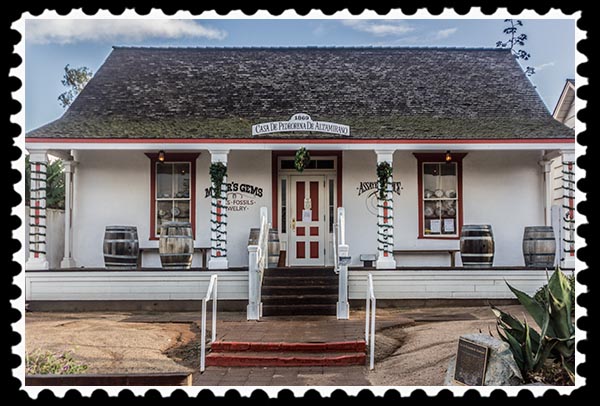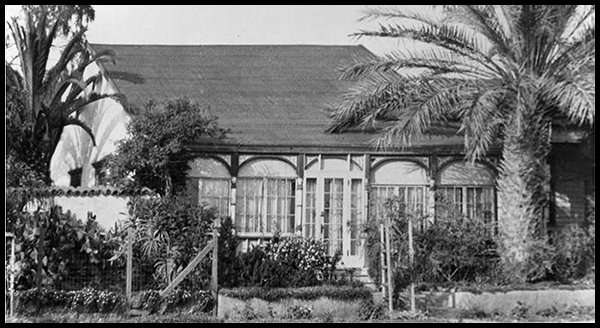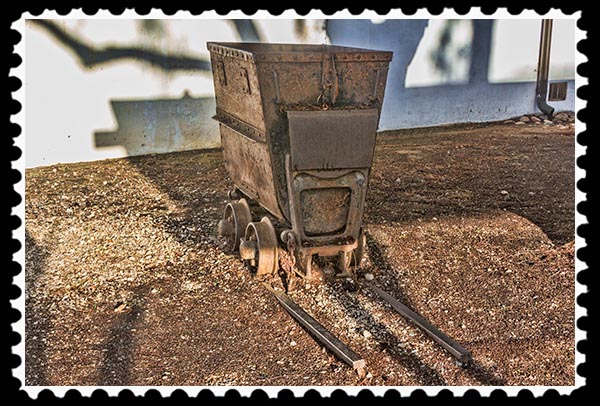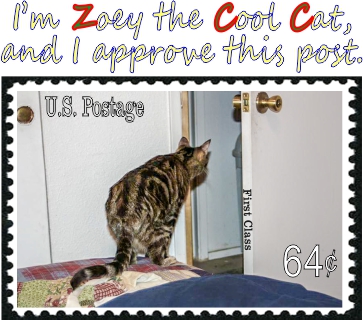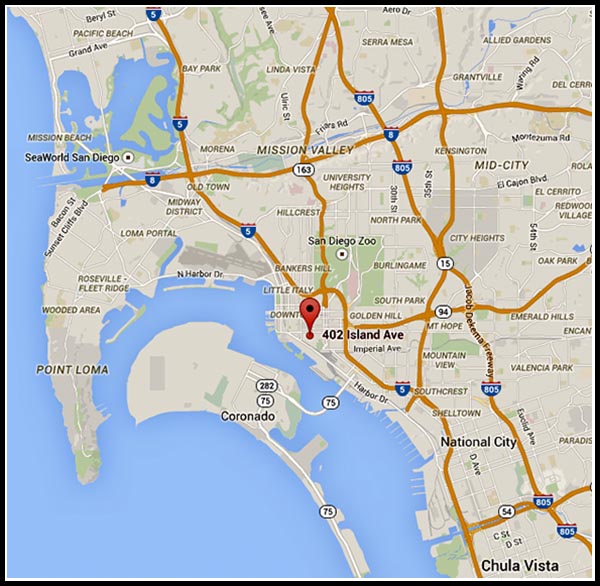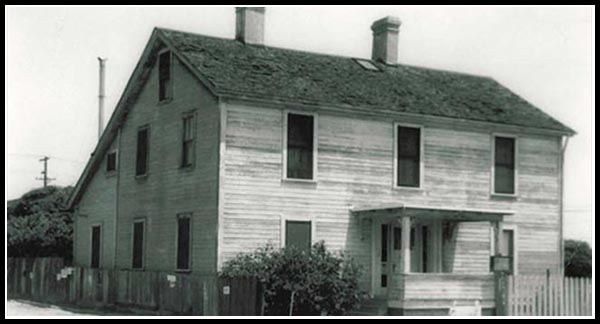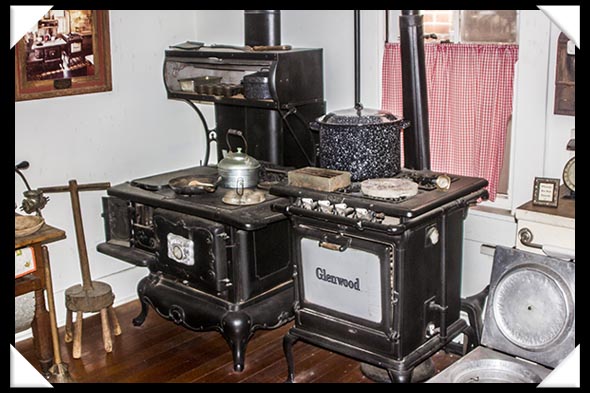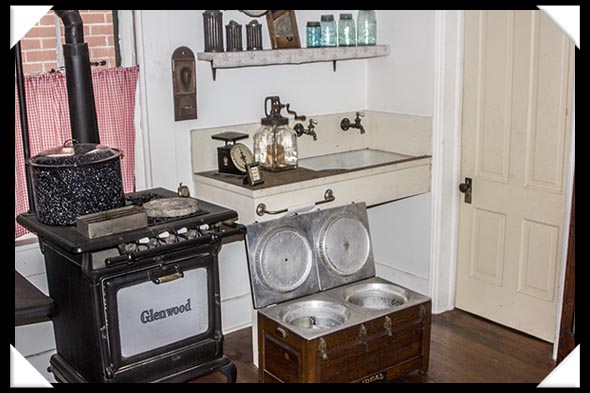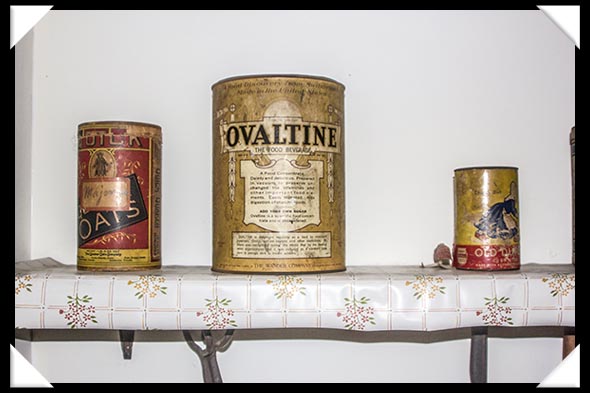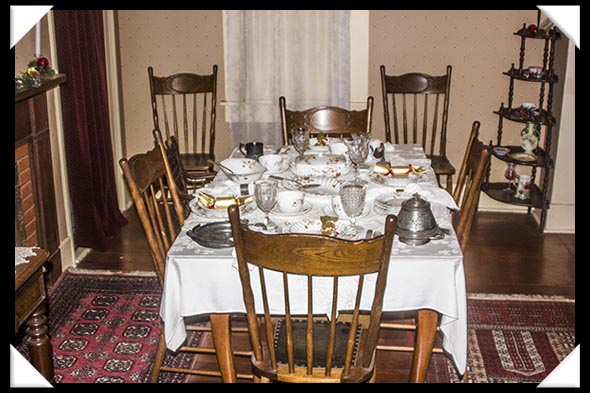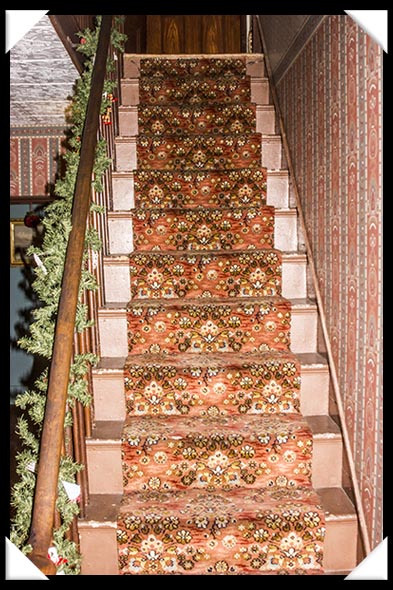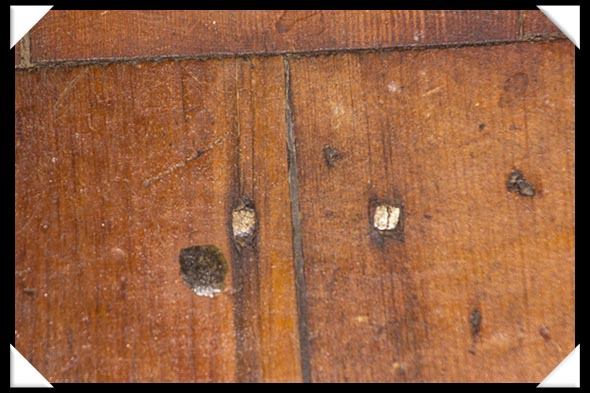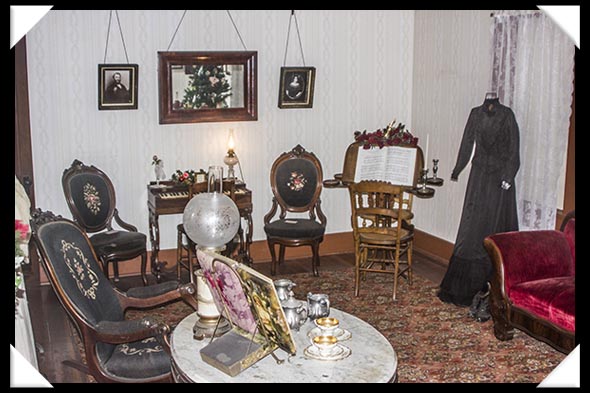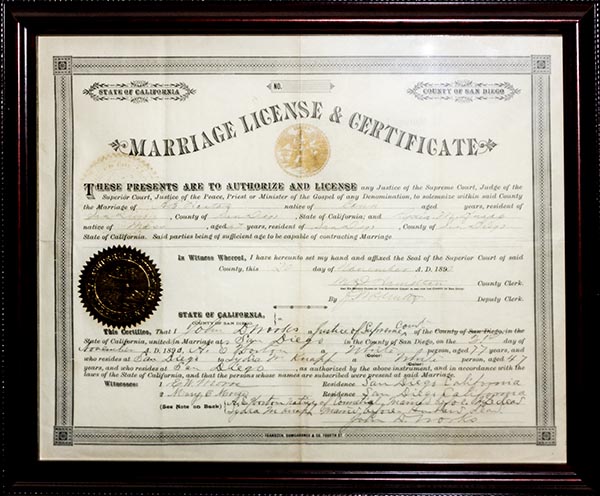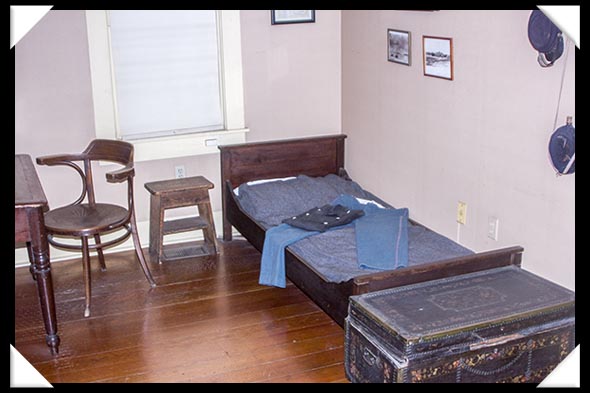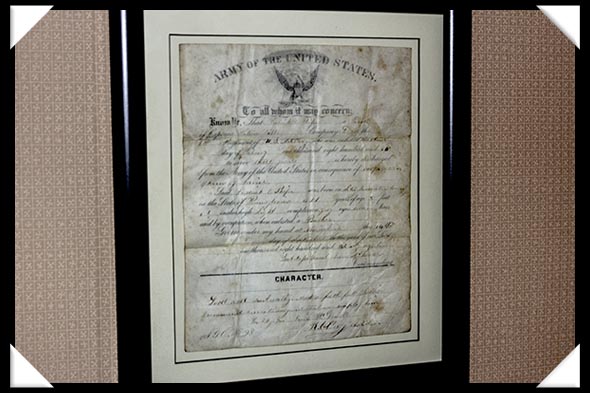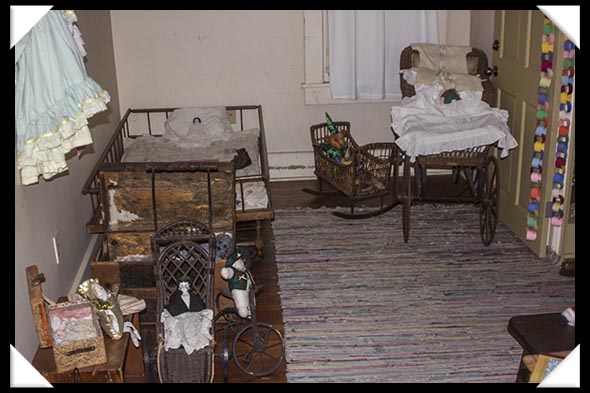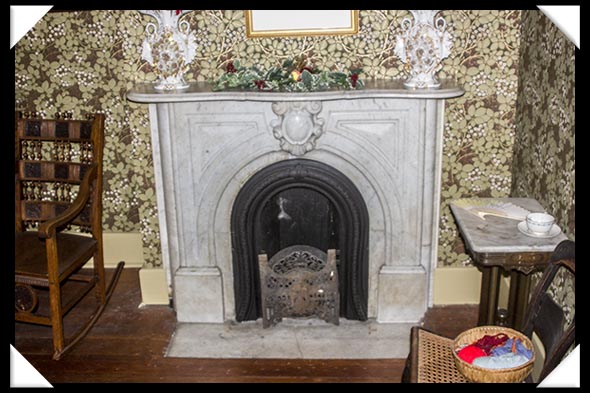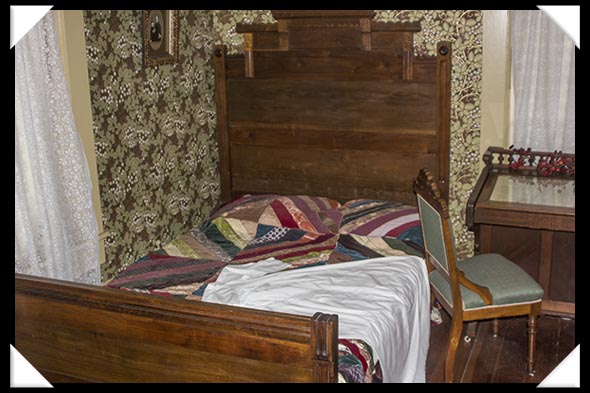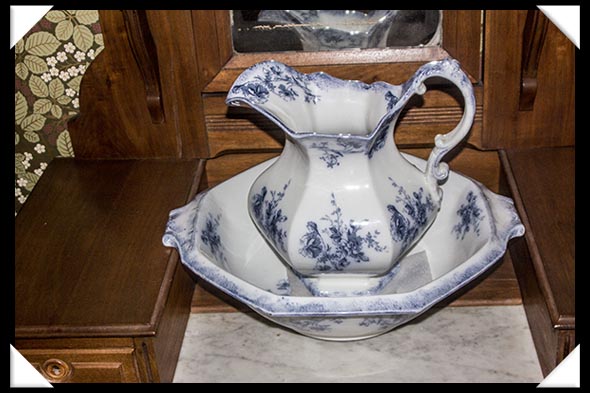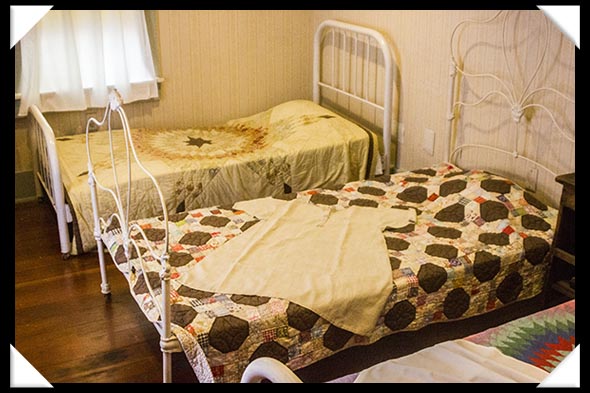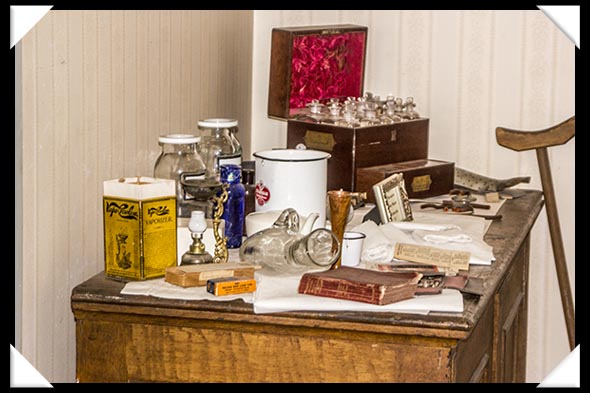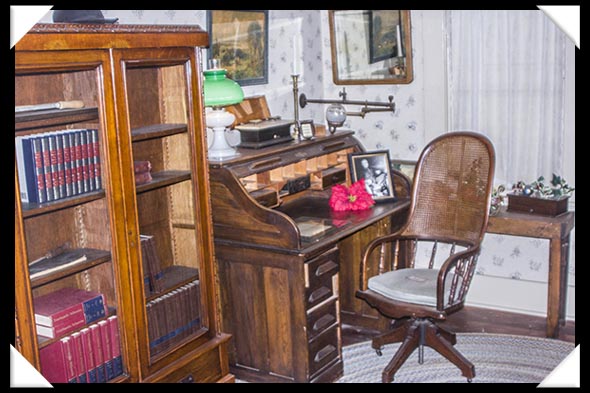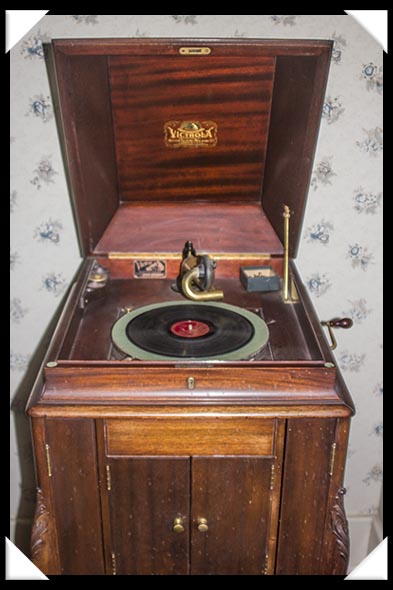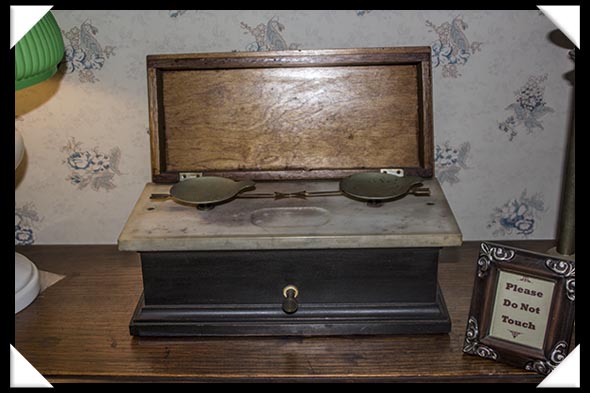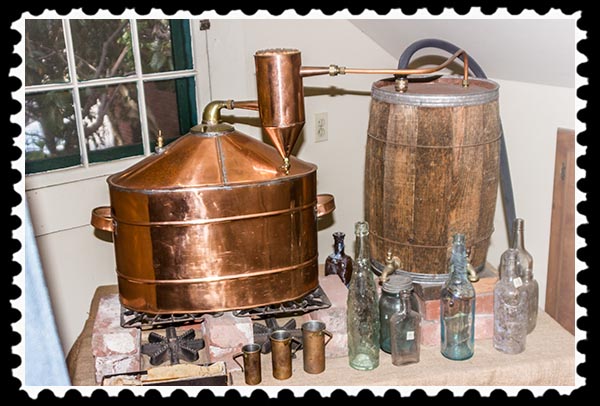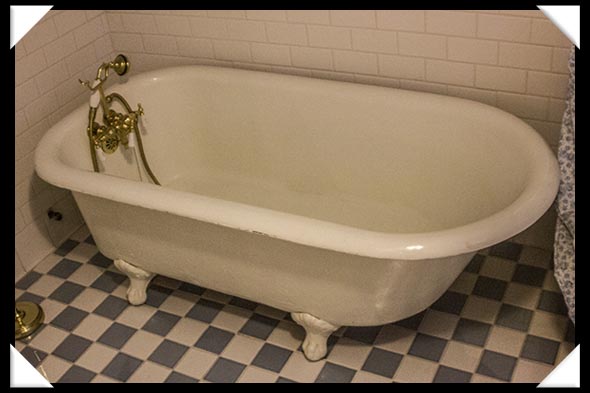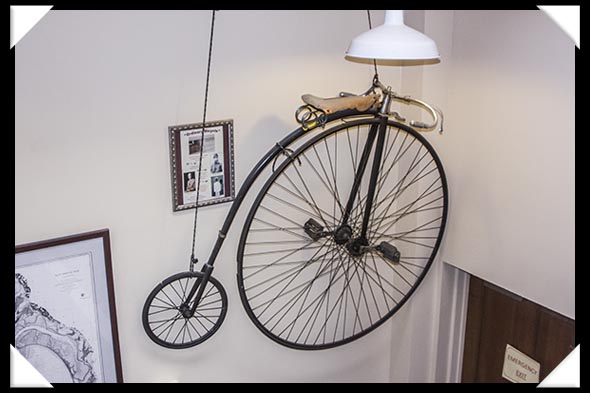 Within Old Town San Diego State Historic Park (San Diego Historical Landmark #14) are many historic buildings and rebuilds. We’ll explore nine of them since they also have been designated San Diego Historical Landmarks.
Within Old Town San Diego State Historic Park (San Diego Historical Landmark #14) are many historic buildings and rebuilds. We’ll explore nine of them since they also have been designated San Diego Historical Landmarks.
The fourth one, San Diego Historical Landmark #14C, is Casa de Pedrorena.
![]()
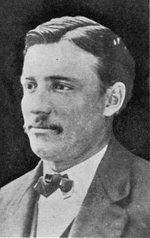 Casa de Pedrorena was built in 1869 by Miguel de Pedrorena Jr (picture ►), a wealthy stockman. His dad, a native of Madrid, Spain, living in Peru had come to San Diego as a ship’s agent, marrying into the prominent Estudillo family in 1842. Although he claimed the lot adjacent to the Estudillo home in Old Town, the historic Casa de Estudillo, he died in 1850 before he could build a home.
Casa de Pedrorena was built in 1869 by Miguel de Pedrorena Jr (picture ►), a wealthy stockman. His dad, a native of Madrid, Spain, living in Peru had come to San Diego as a ship’s agent, marrying into the prominent Estudillo family in 1842. Although he claimed the lot adjacent to the Estudillo home in Old Town, the historic Casa de Estudillo, he died in 1850 before he could build a home.
One online source states that the structure was built in 1850 by Miguel Sr. Since he died on March 21, 1850, I’m going to go with it being built in 1869 by Miguel Jr. I just don’t believe an adobe or framed home could be built in San Diego at that time in a mere 2½ months.
A plaque on the grounds (lower right corner of picture above) states that Casa de Pedrorena was the final adobe built in Old Town, and one online source states that its thick adobe and mud-plastered, whitewashed walls were typical of Mexican adobes in the area. However, the shingled roof, as well as the mill-sawn, wood-columned front porch, reflected American building practices.
Other online sources state categorically that Casa de Pedrorena was “one of” the first frame houses in Old Town.” Several sources state that it was “the first frame house” built in Old Town. Here is a picture taken around 1920:
![]()
I looked closely at the building exterior but could not determine whether it was a wood-frame building or an adobe. I guess I’ll just leave it at that. As my wise old grandmother said, “It is what it is.”
Miguel Sr. came from one of the best families in Madrid, being educated there and at Oxford University. He served as a captain in the United States Cavalry during the Mexican-American War. He was in the forefront of the attack against Fort Stockton when it was finally captured.
 During the early part of the war, he had buried under his house (or the patio behind it, one source says) El Jupiter (picture ►), the old bronze cannon now on display at the Junipero Serra Museum (see my post here) in order to prevent its being used against the Americans.
During the early part of the war, he had buried under his house (or the patio behind it, one source says) El Jupiter (picture ►), the old bronze cannon now on display at the Junipero Serra Museum (see my post here) in order to prevent its being used against the Americans.
Miguel Sr. was a member of the California Constitutional Convention which met in Monterey, California, in 1849. He was a member of the group headed by William Heath Davis which attempted to found New Town in 1850, an attempt that failed because of the lack of fresh water.
Miguel Jr. gave Casa de Pedrorena to his sister, Isabel de Altamirano, in January 1871, a gift that joined together two pioneer California families. Isabel and her husband, José Antonio Altamirano, raised their family in the home.
Although some sources call the home “Casa de Pedrorena y Altamirano,” Altamirano also owned the little frame house next door where the San Diego Union newspaper was first published in 1868. The newspaper building is more traditionally connected with Altamirano’s name rather than Casa de Pedrorena.
Casa de Pedrorena remained a family residence until 1907, although one source says “until the 1890s.” It was restored in 1996 by California State Parks and is said to be one of five historic 19th century adobes in Old Town State Historic Park. Currently it is a gem, jewelry, and rock shop, open daily from 10:00 a.m. to 4:00 p.m. There are two old railroad mining cars located on the property:
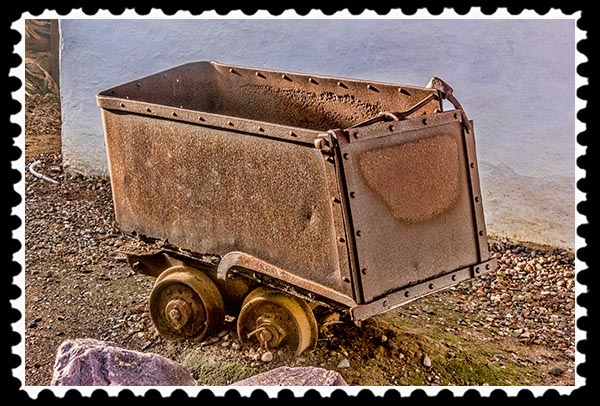
![]()
For the introductory blog post
to San Diego’s historical landmarks,
click on San Diego’s Historical Landmarks.
For previous posts in the
San Diego Historical Landmarks series,
go here.
![]()
Need a unique gift?
Anniversary? Birthday? Graduation? Marriage?
Choose Photographic Art by Russel Ray Photos at Fine Art America.
![]()


